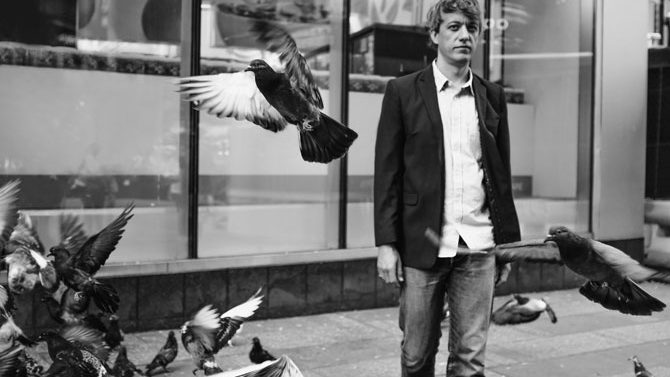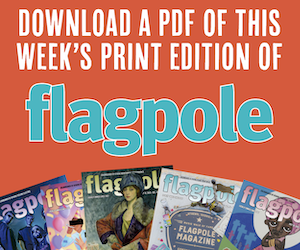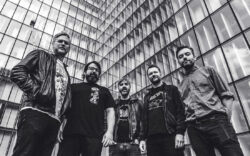As 2016 turned into 2017, the U.S. entered a new era of anxiety. People began organizing mass protest marches, clogging up city streets around the world with hundreds of thousands of disaffected voices. Social media became a frontline where wars are fought daily over politics, gender identity, basic science and human rights violations. It was also a time when singer and guitarist Steve Gunn slipped into writing mode, fleshing out ideas for his latest album, The Unseen in Between.
“Trump had just been elected, my father had recently passed, and there was a heightened sense of tension and paranoia all around,” Gunn says. “But that’s also when I started seeing the greater good coming out of everyone. I felt really hopeful.”
Nowhere is this psychic push and pull felt more intensely than in the first lines of the album’s opening number, “New Moon.” Gunn sings, “I see a glimmer/ Across the wall, through the mirror/ Out past the streets, beyond the weather/ To that place no one seems to know.”
Since the arrival of his 2009 solo debut, Boerum Palace, Gunn has shown a singular ability to stir up breathtaking atmospheres using only his voice and the sound of steel strings. Albums such as 2014’s Way Out Weather and 2016’s Eyes on the Lines brought Gunn’s songwriting into sharper focus. In Gunn’s music, John Fahey and Jack Rose’s avant-garde Americana is tempered by the intricate rhythms, soaring melodies and melodic rock flourishes brought to life by guitarists Richard Lloyd and Tom Verlaine with Television’s 1977 album Marquee Moon.
Gunn’s forte has long been the creation of rich atmosphere, steeped in alluring, abstract imagery in both language and sound. With The Unseen in Between, however, a transformation is on display. From photographer Annabel Mehran’s black-and-white portrait of Gunn poised to leave at a moment’s notice to the album’s more refined singles, “Vagabond,” “New Familiar” and “Morning Is Mended,” a more concrete identity for the man behind the songs takes shape—but never at the expense of subtlety. Gunn is rising to a level of songwriting that evokes the craft of mid-‘60s and early-’70s folk innovators Bert Jansch, Leo Kottke and even Bob Dylan, while adding depth to his own musical motif.
Part of Gunn’s inspired new chapter came about after he crossed paths with one of Dylan’s longtime cohorts, bass player Tony Garnier. The two met one day at Brooklyn’s Strange Weather Recording Studio. Gunn was recording his own session, while guitarist and New York fixture Marc Ribot was recording material for his 2018 album, Songs of Resistance 1942–2018. Ribot’s sessions brought a who’s who of revered songwriters to the studio, ranging from Steve Earle to Elvis Costello. Garnier was in the building, and when he heard what Gunn was working on, the two became fast friends.
At first, Garnier came on board simply to play bass. But for Gunn, the experience, knowledge and encouragement he brought to the project became a major factor in shaping the album’s depth.
“I don’t know if he necessarily guided the sessions, but in a sense, he guided me. There was a certain sense of presence in him that really was supportive,” Gunn says. “He kept telling me, ‘Be yourself, don’t overthink it, and we’re all here.’”
For Gunn, that push was invaluable. “He came into this project from such an outside angle,” he says of Garnier. “I knew what I was getting at, and when you’re in the studio, you can really start second guessing yourself—at least, I do… It’s hard to get comfortable, the clock is ticking, you’ve had too much coffee, and you’re unsure about part of a song. You start questioning everything, and all of a sudden, you go into a tailspin and waste half a day just dicking around. Tony kept me grounded and worked through the music in a really organic way.”
For Gunn, strengthening the exchange between the songs and the listeners while revealing new dimensions in the music was at the forefront of his mind—far more than crafting any sense of new character for himself.
“I want people to interpret the music differently, for themselves,” he says. “Sometimes, experimental music or expression can serve different purposes for people. As a songwriter, that kind of exchange is important.
“It isn’t just music for me,” he adds. “Certainly, one of the positive aspects of this is if the music helps someone get through something they’re dealing with, whether it’s from listening to the words or listening to the feelings that I create.”
With The Unseen in Between, Gunn has created his most evocative and highly evolved material yet. And in times of such darkness, the album shines through the gloom with bold radiance.
Like what you just read? Support Flagpole by making a donation today. Every dollar you give helps fund our ongoing mission to provide Athens with quality, independent journalism.









